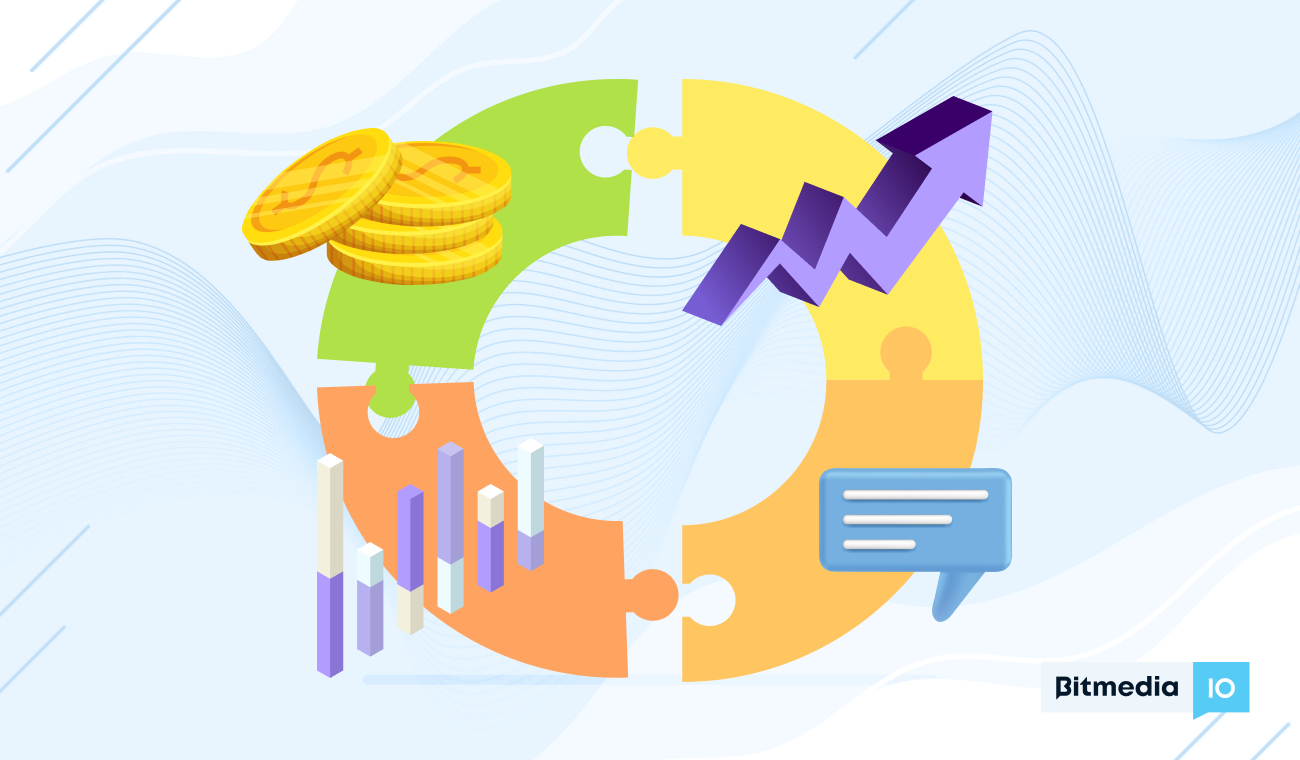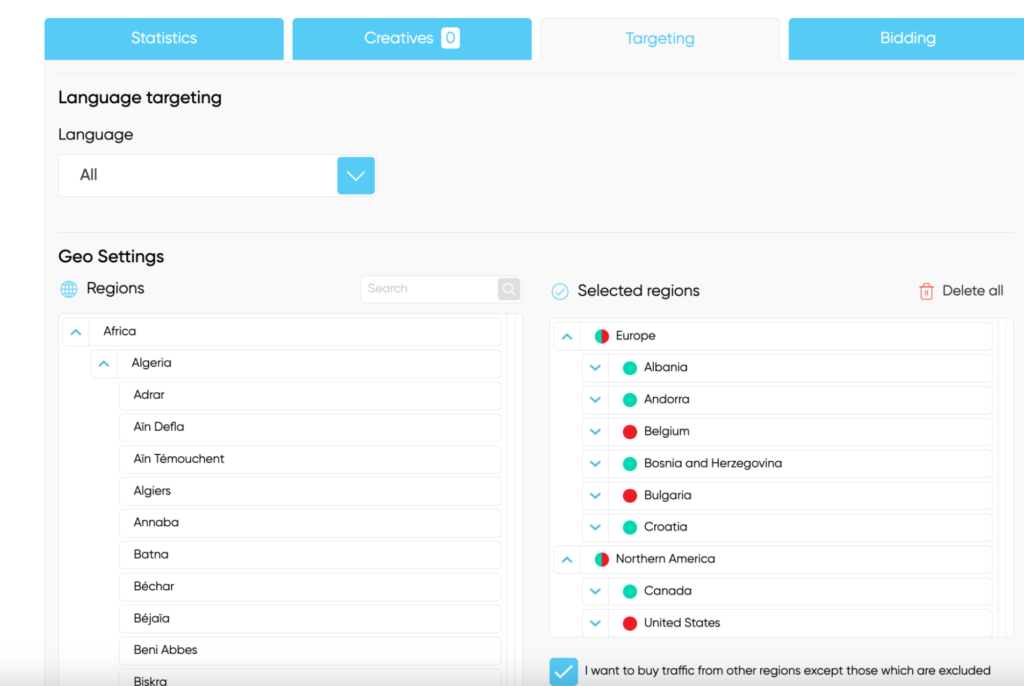10 Big Reasons You Aren’t Getting Traffic from Banner Ads

Technical and strategic errors and everything in between may be why you get zero conversions from your banner ads; we will tell you why.
Banner advertising can get sufficient traffic to your website, generate leads, increase brand awareness, and ultimately earn you money even when you’re sleeping. If your banner ads campaign has stagnated and you do not realize a return on investment, Bitmedia.io will help you avoid the following potential mistakes.
1. Ineffective Targeting
Nothing wastes money or causes a banner ads campaign to become stomach-churning, like targeting the wrong audience. Determine your target market by age, interests, gender, or location to determine their interest in your product or service. Then, direct your ads to the right group instead of blasting your message to the wrong market.

2. Improper Ad Placement
The location of ads affects users’ browsing experience leading to banner blindness, low ad engagement, and underperformance. Users ignore annoying, intrusive, outdated, and poorly placed banner ads that are distractive and complicate their browsing experience. Ads that disrupt a user’s natural reading flow will only increase the chances of ad blindness. Rather, implement native ads that match the design and content of pages, giving users a more natural feel to improve user experience.
3. Ineffective Design
While prospective customers are drawn to compelling click-in ads, human nature prefers simplicity over complexity. The underlying force in your banner ad design should follow a cognitive concept called processing fluency, referring to how easily users can grasp information. Your ads fail the simplicity test if they are too visually creative, making them difficult to consume instantly or offering too many options. Creating simple, compelling ads using easy-to-understand language to help consumers trust brand information makes purchasing decisions easier.
4. Weak Call-to-Action (CTA)
Ad platforms give limited space, and you must use a few dozen characters at your disposal to compete with other on-page elements. A weak call-to-action (CTA) that doesn’t draw users in instantly in a concise manner becomes your undoing and leads to ad blindness. Aim for a CTA that entices users by offering value they may not have seen and showing them how taking action will improve their situation. A strong CTA attracts interested users, increases click-through rates, and saves you money by filtering out uninterested users that aren’t your target audience. Signs of a weak CTA strategy include hard finding CTAs, unclear or wrong value, lack of urgency, no emotion, and lack of testing or conversion rate optimization.
5. Irrelevant Messaging
Consumers will quickly turn their backs and disregard brands that bombard them with banner ads they perceive to be irrelevant. Consumers will likely buy from you if your ads send them tailor-made messaging that cuts through the clutter to reach and convert. Understand your customers’ online behavior so your ad campaign can make an appropriate approach in terms of devices, channels, and context. Your brand will only succeed if you can turn information into personalized and targeted intelligence that reaches the right customer in the right way.
6. Lack of A/B Testing
A/B testing gathers data on your ad’s CTA performance, but most marketers are guilty of doing it wrong or ignoring it altogether. While the process seems complicated enough to detract one from the real marketing business, ignoring it for design optimization diminishes your ROI. Implementing the seemingly endless list of features involved in A/B testing for creative management platforms (CMP) offers your efforts more useful and interesting outcomes.
Among the prominent aspects of A/B testing include:
- Headline: the length and the voice and whether it conveys a sense of urgency or a negative or positive tone
- Image: background, features, and image optimization
- Call to action (CTA): the color of the button, language, and style
7. Oversaturation in the Market
The proliferation of the internet has increased the number of banner ads and devices from which people see them. Businesses are competing for ever-decreasing attention from users who report being swamped by the same ads repeatedly. Oversaturation occurs when brands over-target by setting overly narrow parameters for their target audience or through too many repeated campaigns directed to the same audience. The ad bombardment leads to “ad fatigue,” making users annoyed and their engagement dropping. Connecting with your account manager at bitmedia.io will help you avoid oversaturation by ensuring your ad spend doesn’t exceed your audience size and campaign needs, besides respecting built-in safeguards designed to prevent over-targeting.
8. Insufficient Frequency and Reach
The primary goal of every banner ad campaign is reaching out and increasing the likelihood that someone will get interested in the product or service. A lack of a balance between reach and frequency can negatively impact the success of your campaign. Reach helps build brand awareness, generate leads, and increase sales, while frequency helps to emphasize the message and increase brand recall. Getting the right balance between reach and frequency enhances brand awareness, increases customer loyalty, establishes a positive reputation, and attracts new customers.
9. Failure to Adapt to Trends
Customers and markets are changing so fast that the biggest business threat is failure to adapt to changing trends. The infiltration of digital advertising intelligence means traditionally profitable tools are less effective than in the past. While banner ads may seem too old-fashioned to get noticed, ads have become more interesting, and how a company adapts determines its success rates.
Companies like Facebook and LinkedIn are trailing the blaze in local ad targeting by integrating geographical-based advertising with keyword and standard demographic targeting. Other emerging trends include local targeting and shifting from a cost-per-click pricing model to a cost-per-action where you only pay a publisher after getting the action you wanted from an ad.
10. Neglecting Analytics and Optimization
Lack of conversion rate analytics and optimization is an integral part of a successful banner ad campaign that holds back most businesses. Businesses that use data and analytics should take advantage of valuable insights regarding how visitors interact with websites and ads. As a result, marketers shoot in the dark as they don’t know what changes to make to improve their conversion rates.
Data and optimization analytics on factors like website traffic, conversion, and bounce rates are essential in identifying improvement areas and making informed decisions. Without these insights, you’ll likely continue implementing banner ads that miss the mark, fail to connect with the target audience and lead to low conversions. Take the time to understand analytics and optimization so you can appreciate your target audience and what makes them tick.
The Parting Shot
It’s an open secret that garnering traffic from banner ads is not a walk in the park. Moreover, competition is now fiercer than ever, as potential customers see more and more ad campaigns than before. If you’re going to get a return on investment, you need to be extra vigilant in implementing a vigorous ad campaign to see substantial results.
Making any of these ten mistakes mentioned here will keep you from achieving your goals and eat into your banner ad funding. However, you can take a step back, re-evaluate your strategies, and choose to implement an effective banner ad campaign with Bitmedia.IO to drive targeted traffic to your crypto project. If you’ve made any fundamental mistakes, we can fix them and hopefully help you improve your ad copy so your advertising dollar can go far.


